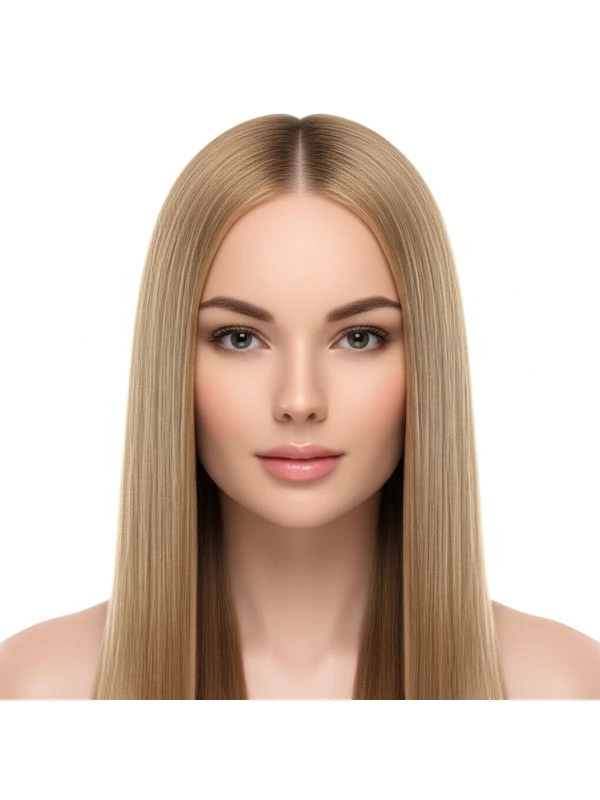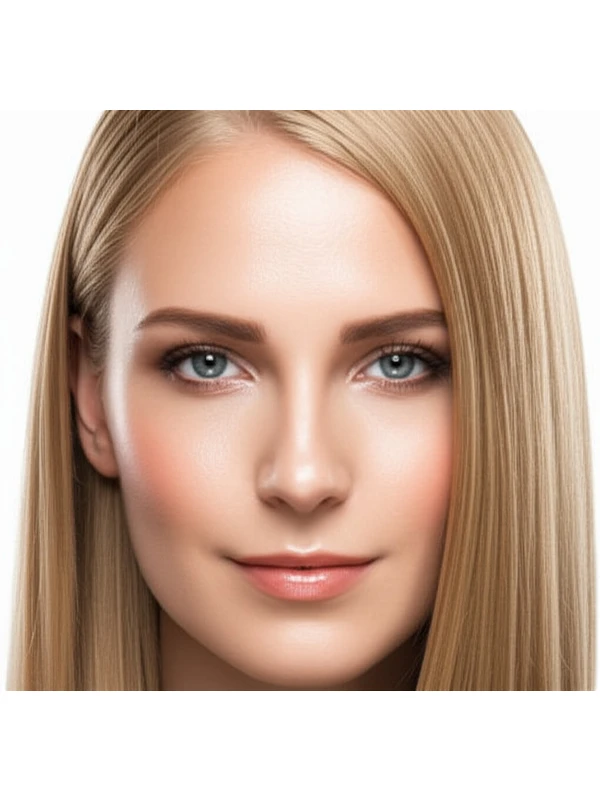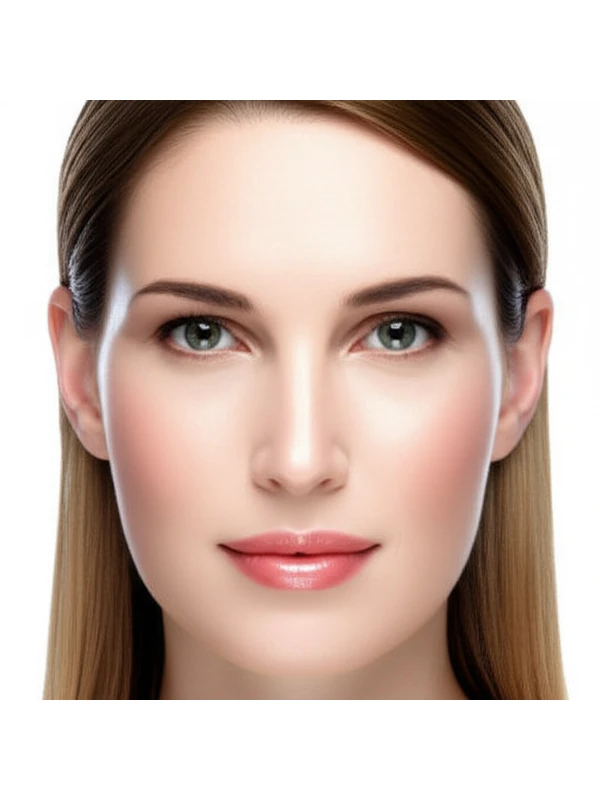#The Ultimate Guide to Hair Glossing: Shine, Dimension, and Effortless Color
Glossing is a popular salon treatment that adds shine and enhances your hair’s color—or subtly changes it. It's more than just a shiny finish; it's a technique with versatility! Let's dive into everything you need to know about this transformative service.
#1. What is Hair Glossing & How Does It Work?
A gloss treatment involves applying a semi-permanent color or clear glaze to your hair. Unlike permanent dyes, glosses don’t lift (lighten) the natural hair color; they deposit pigment and/or seal the cuticle. This results in an overall boost of shine and vibrancy.
Tools & Placement: Your stylist will apply the gloss using a brush, often starting at the mid-lengths and ends of your hair. The roots are sometimes glazed too, depending on your desired outcome (more on that later).
How it Works: Glosses work by depositing color onto the surface of the hair shaft and smoothing down the cuticle—the outer layer of each strand. A smooth cuticle reflects light more effectively, creating a noticeable shine.
Timing: The processing time for a gloss typically ranges from 5 to 30 minutes, depending on the desired intensity and your stylist's instructions. Heat (like a hairdryer) can sometimes be used to accelerate the process.
#2. Best Use Cases: What Can Glossing Achieve?
Glossing is incredibly versatile! Here are some common goals it helps achieve:
- Adding Dimension: A gloss can subtly shift tones, adding warmth or coolness and creating more depth within your hair color.
- Root Blur/Softening: Applying a gloss close to the roots gently blends harsh lines between natural growth and previously colored hair. It creates a softer transition.
- Face-Framing Highlights: Glosses can be strategically placed around the face to enhance highlights or add subtle warmth where it's needed most.
- Color Refreshment: Glossing is excellent for revitalizing faded color, bringing back vibrancy and richness.
- Neutralizing Unwanted Tones: Brassiness? Redness? A gloss can help neutralize these tones with complementary pigments (e.g., violet-based glosses combat brass).
- Even Tone & Coverage: Glossing helps create an even application of color, covering any uneven patches or areas where the color has faded more than others.
#3. Who Suits a Hair Gloss?
Glossing is adaptable for many hair types and colors, but here’s a breakdown:
- Natural Color Level: Generally suitable for all levels—from dark brown to blonde. The effect will vary depending on your starting shade.
- Undertone: Works well regardless of whether you have warm (golden, yellow) or cool (ashy, blue) undertones. Your stylist can select a gloss that enhances your natural tones.
- Hair Type/Texture:
- Straight Hair: Benefits from the added shine and smoothness.
- Wavy Hair: Glossing helps define waves and reduce frizz.
- Curly & Coily Hair: Can enhance curl definition, add moisture (depending on the gloss formula), and minimize breakage.
- Hair Density: Suitable for both fine and thick hair; application techniques will be adjusted accordingly.
- Hair Length: Works equally well on short bobs, long layers, or anything in between.
- Lifestyle: Ideal for those who want low-maintenance color enhancement and increased shine without a significant commitment.
#4. Glossing vs. Similar Techniques
Understanding the differences is key!
- Balayage & Foilyage vs. Highlights: These techniques lighten your hair using bleach or developer, whereas glossing deposits color only. Balayage and foilyage create more dramatic dimension than a simple gloss.
- Root Smudge vs. Shadow Root vs Glossing: All three soften root lines. A shadow root is usually achieved with a very subtle application of lightener to the roots during an overall color service, while a root smudge uses a slightly darker shade applied specifically to the roots and blended outwards. A gloss can be used after either technique to enhance the blend and add shine—or it can be used on its own for a more subtle effect.
- Glazes vs Glosses: The terms are often used interchangeably, but glazes typically refer to clearer formulas with less pigment, primarily focusing on shine enhancement. A gloss will almost always contain some degree of color.
#5. Maintenance & Longevity: Planning Ahead
- Salon Timing: Gloss treatments generally last between 4-8 weeks, depending on your hair type and how often you wash it.
- Toner/Gloss Refresh: To maintain the shine and tone, schedule a gloss refresh every 6-12 weeks. Your stylist can advise on the best frequency for your hair.
- Grow-Out Behavior: The color will gradually fade with each wash, but the added shine will remain longer. Root blending is less noticeable than with permanent color; grow-out tends to be softer.
- Budget/Time Planning: Glossing is typically less expensive and quicker than full highlights or a complete color change (around $50 - $150 depending on hair length and salon).
#6. At-Home Care Tips for Glossed Hair
Protect your investment!
- Wash Cadence: Reduce washing to 2-3 times per week, as frequent shampooing can strip away the gloss's pigment and shine.
- Heat Protection: Always use a heat protectant spray before using any hot styling tools (blow dryers, curling irons, straighteners).
- Color-Safe Care: Use sulfate-free shampoos and conditioners specifically formulated for color-treated hair. These are gentler and help preserve the gloss’s vibrancy.
- Deep Conditioning: Incorporate a deep conditioning treatment once or twice a week to keep your hair hydrated and shiny.
#7. Pros & Cons of Hair Glossing
Pros:
- Adds incredible shine
- Enhances color vibrancy
- Blends root lines seamlessly
- Low commitment – fades gradually
- Less damaging than lightening processes
- Relatively quick and affordable
Cons:
- Doesn't lighten hair (no significant color change)
- Color fade can occur with frequent washing
- May not be suitable for those wanting a dramatic transformation
#8. Salon Consultation Script: Questions to Ask Your Stylist
To ensure you get the gloss you want, prepare these questions and discussion points:
- "What shade of gloss would best complement my skin tone and existing hair color?"
- “Can we focus the gloss on specific areas (e.g., face-framing)?”
- “How will this gloss affect my current level of warmth/coolness in my hair?”
- “What kind of maintenance is required after a gloss treatment, and how often should I return for touch-ups?"
- “Will the gloss impact any previous chemical processes on my hair (e.g., highlights, keratin treatments)?”
- "Can you show me examples of different glossing results on similar hair types/colors to mine?"
#9. Frequently Asked Questions About Hair Glossing
- Is glossing damaging? Glosss are generally less damaging than lightening processes because they don't lift the natural color, but any chemical process can affect your hair.
- Can I get a gloss if my hair is already highlighted or colored? Absolutely! In fact, it’s often used after highlights to tone and blend the color.
- Will a gloss cover gray hairs completely? Glosses primarily enhance existing color; they won't fully conceal gray hairs. A demi-permanent dye might be more suitable for significant gray coverage.
- Can I do a gloss on previously bleached hair? Yes, but your stylist needs to assess the condition of your hair first as bleaching can weaken strands.
- What’s the difference between a clear gloss and one with pigment? A clear gloss adds shine without changing color, while pigmented glosses deposit tone—either enhancing existing color or correcting unwanted tones like brassiness.
- How long will it take for the gloss to completely fade out of my hair? The fading process is gradual; you’ll notice a reduction in vibrancy and shine over 4-8 weeks, but any added pigment will remain longer if cared for properly.


